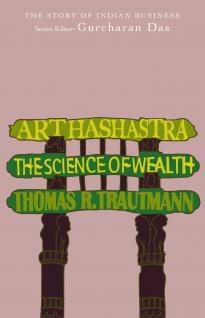This small book tries to bring the mighty Arthashastra to you and does so very effectively. It does not take you through the academic study of Arthashastra. And its context then and now. It picks up some tenets that are relevant to the roots of the business as it exists today. It looks at the two popular existential states of a state i.e. a kingdom and a republic. And it looks at the economic aspects that Arthashastra talks about. And how it is possibly relevant or not relevant today. It looks at the ancient book of wealth as a reference book. A book that provides information and knowledge on politics and economy in an ideal state. A state that exists for a common good headed by a king.
The first chapter after a long introduction takes a look at the kingdom vs republic debate. Now the republic as it existed during the time of Chanakya is very different from the one that we live in today. The republics then were very small. It tells you what differentiates kingdoms and republics. It analyzes the reasons for kingdoms being more long lasting than the republics. And being more financially stable as they engage in active wealth generation. It says though republics are more stable politically as it cannot be seized merely by killing the king as in case of kingdoms. From here on everything is about Kingdoms as Chanakya talks about an ideal kingdom. And has not much to offer for republics. Does this mean he recommends kingdoms over republics? Maybe.
It goes on to tell about the inventory that a king maintains of precious metals, granary, armory, textiles and goods of general use. He describes in detail the proportion of produce that should be maintained as inventory by the king. To take care of crisis situations like famines or wars. There is a prescription for consumption of consumables by men, women and domesticated animals. That state not only the quantity they should consume but also the quality depending on the kind of work they do and where they stand in the social hierarchy. The best is obviously reserved for the king.
He then takes you through the various workplaces. And here too there is a hierarchy. Farmland was the most valued along with the farmer. Then came the grasslands that were used by the domestic animals. Followed by the mines and workshop working on producing various metal and textile products. The workshops were always close to the source of raw materials to avoid the unnecessary transportation cost. King was also a worker who owned land and produced his own produce like everyone else. But was also entitled to a part of produce as taxes from others in his kingdom. Taxes were always a part of the produce.
Finally, authors talk about the trade, and primarily the international trade. India used to export textiles, pearls, and spices in exchange for corals and gold. In animals, it used to trade elephants for horses. Creation of trade routes was king’s responsibility. And there are two main trade routes mentioned one in the North through the Himalayas (is this same as silk route, is not mentioned). And the other in the south, which I assume, will be the route in which lie caves like Ajanta. What should be traded on what route is also prescribed? There used to be various officers responsible for running and regulating the trade, including collecting revenue for the state.
There is a mention of price control. The king ensures that during excessive supply or demand, the prices should not fluctuate beyond a certain level. This was done very smartly by ensuring that any excess funds generated through these price fluctuations would go to the state treasury. But the aim was to protect the interests of both the traders and the consumers.
An interesting point about the international trade was that traders from other parts of the world can come to the gates of the kingdom, where they must sell their products to the local traders. Who will then sell it as retailers to the general public in the kingdom? Outsiders were not allowed to deal directly with the public. In fact, if you go around the old city walls of any old city in India, outside it you will see various Sarais, which were meant for these traders to stay.
There are usual debates about the time of the text, its authorship and if it is meant for a real or an ideal kingdom. But overall an extremely interesting read on the Science of Wealth as described by Chanakya… Anyone with any interest in the business will enjoy reading this book.
You may buy this book – Arthashastra – The Science of Wealth by Thomas R Trautmann at Amazon.
Read the review of other books in this series.









